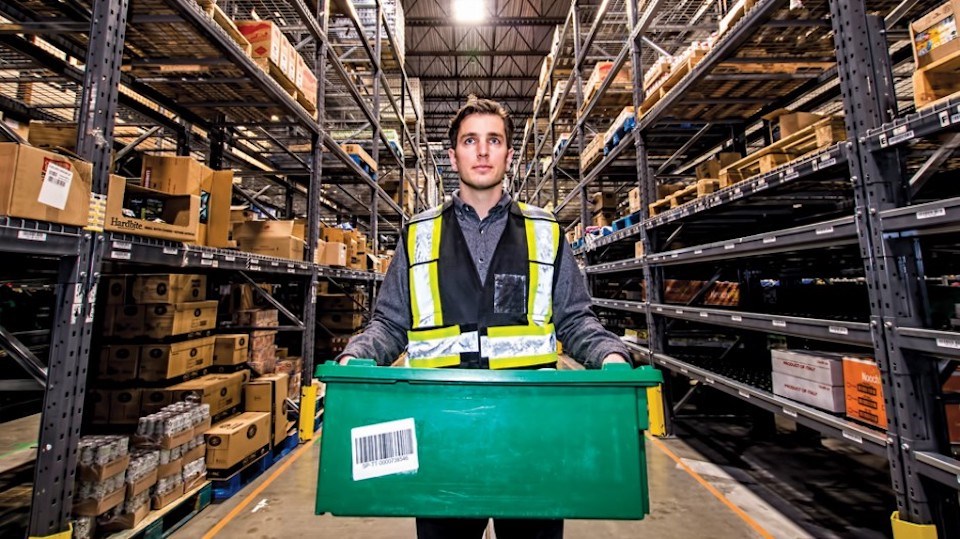British Columbians accustomed to indulging in tenderloin dinners may soon be giving those up for flank steak as food prices continue to soar.
Inflation hit a three-decade high of 5.7 per cent year over year in February, while food prices surged even higher – up 7.4 per cent during that same period.
This comes as continued supply chain issues, rising labour costs and the aftershocks of Russia’s invasion of Ukraine are still playing out, with the potential to put further strains on the cost of food.
Now B.C. companies specializing in food delivery – from meal-kits to groceries – find themselves in a tight balancing act as they try to turn a profit without pricing out customers that are also facing some belt-tightening amid record inflation.
“A price increase is not something that we take lightly,” said Becky Brauer, co-CEO of meal-kit delivery service Fresh Prep Foods Inc.
The Vancouver-based company launched in 2014 and raised $21 million from investors last year as it was delivering 10,000 meals across the province each week.
“We have recently implemented a small price increase to offset those like rising food costs as well as labour costs,” Brauer said, adding her team always considers if certain price hikes are temporary or permanent. If it’s the former, she said the company won’t pass those costs onto consumers.
“We’re really thinking what’s happening long term and do we need to increase prices to account for that,” she said. “We’re not trying to cut costs in terms of sacrificing quality.”
Despite uncertainty brought on by the volatility of inflation, Brauer said business looks steady after the pandemic boosted adoption of meal-kit services and accelerated business growth overall.
“The perception was, ‘OK, well, there’s going to be this huge spike and then it’s going to go back to normal,’” she said, referring to the outset of the pandemic.
“In actuality, what we saw was a huge spike and then we saw a lot of maintained growth.”
Fresh Prep has also moved into new markets, launching services in Calgary and Edmonton this past September.
Corbin Bourree, senior vice-president of e-commerce and retail at Sustainable Produce Urban Delivery Inc. (SPUD), said his Vancouver-based grocery delivery service has increased its customer base 30 to 40 per cent compared with before the pandemic.
Web traffic on SPUD’s website surged more than 600 per cent during the initial lockdown in March 2020 and business doubled within seven days, according to Bourree.
“We’re still seeing significantly higher baskets … [with customers] buying close to 20 per cent more than they would have in a given online shop than pre-pandemic,” he said, adding the company’s headcount has almost doubled from 550 to nearly 1,000 over the course of the past two years.
Despite all the growth, inflation remains top of mind for the online grocer.
Bourree said SPUD has been open with customers about recent price increases, and has begun offering less expensive products in addition to the certified organic products it’s best known for.
“Whether it’s the challenges with trucker and truck shortages coming out of the U.S. that actually predates a lot of the COVID pandemic challenges, it’s just been exacerbated,” he said.
“Whether it’s the fuel increases, whether it’s just the lack of workers in different food manufacturing sites or on farmer’s fields … we just try to be transparent with people.”
Online restaurant ordering, meanwhile, has settled as of late after accounting for roughly 40 per cent of orders at points during the pandemic, according to Ian Tostenson, CEO of the BC Restaurant & Foodservices Association.
“It’s bouncing between 25 and 30 per cent consistently. It’s down a little bit from, say, 40 per cent but not much,” he said, noting consumers have become reliant on third-party apps throughout the course of the pandemic.
He doesn’t see such restaurant delivery apps as a fad, adding that services such as Uber Eats or SkipTheDishes Restaurant Services Inc. accounted for between 10 and 15 per cent of orders prior to the pandemic.
Tostenson said the associated fees those services charged restaurants often made it difficult for restaurateurs to turn a profit on orders, but provincial regulations have now capped fees at a more digestible 20 per cent.
But price hikes on menus – as well as other adjustments – are inevitable given inflationary pressures on restaurants, especially amid the ongoing labour crunch and need to recruit more workers, he added.
Smaller portion sizes and more people ordering share plates are two likely outcomes of food inflation, at least for now, Tostenson said.
“Hopefully it’s not long lasting and that we’re in a bit of a curve and we can hold our breath a bit here,” he said. “But you will see there has to be some adjustments on the pricing.”



